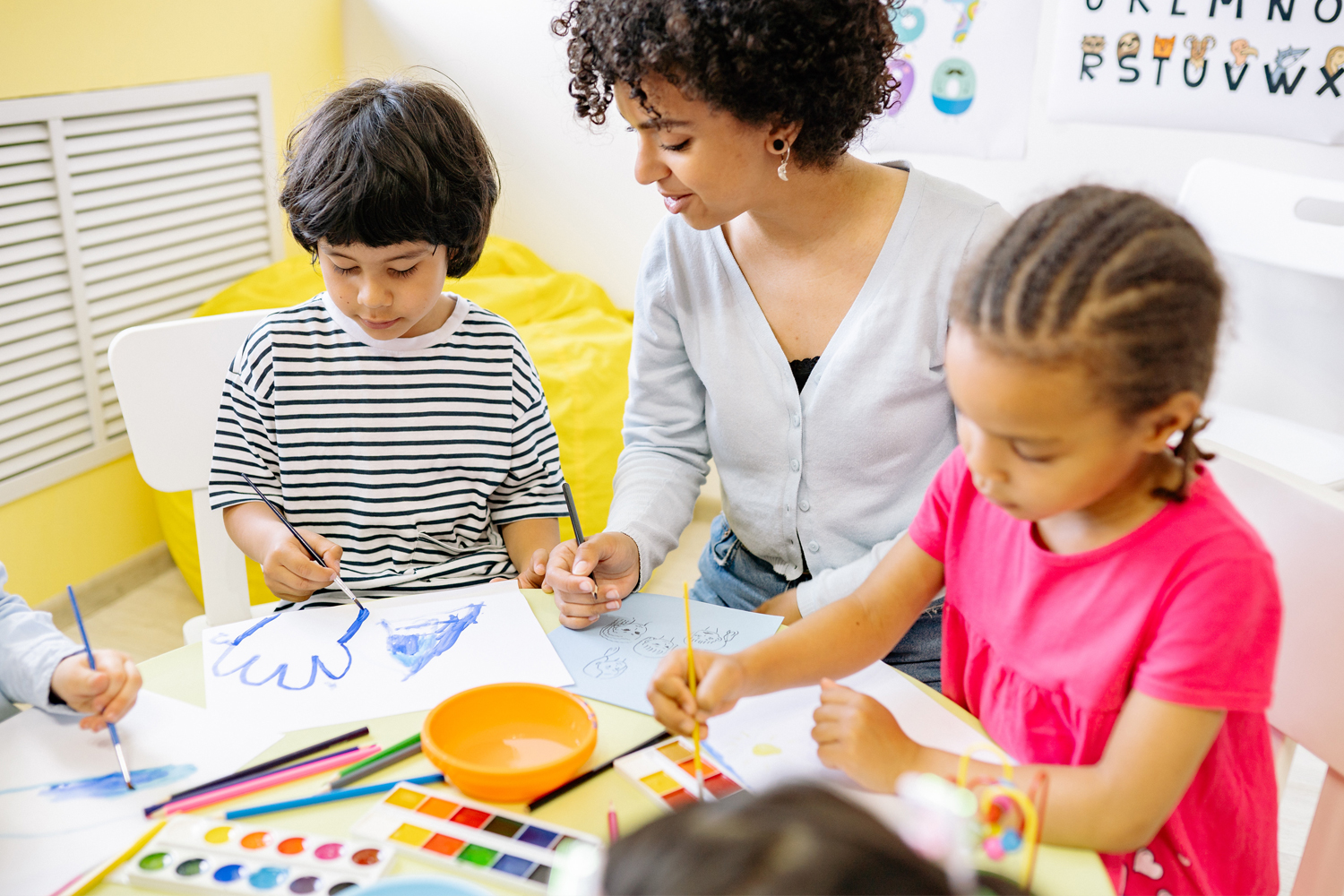7 Language Facilitation Strategies
Between hectic schedules and the daily bustle of life at home, finding time to build and grow your child’s language can be overwhelming. This blog gives different language facilitation strategies you can use at home. Finding little moments in your day to connect and play with your child can be the perfect time to build their language. While using these language facilitation strategies at home, it is important to remember: have fun! These strategies should not be stressful, for your child or for you. When sitting down to play with your child, begin by following their lead. Your child will be most motivated to communicate with you when they are doing what they love. While you are playing together, practice one (or more!) of these language facilitation techniques. Try a few and see what works best for you!

1. Parallel Talk
- What is it?
While playing with your child, describe what the child is doing during play.
- How can I do it at home?
While playing with cars, you can say “You are driving the red car. Beep beep. The car is fast!”
2. Self-Talk
- What is it?
While playing with your child, describe your own actions during play.
- How can I do it at home?
While playing with blocks, you can say “I am building a tower. I put blocks on top. Woah, don’t fall down!”
3. Expansion
- What is it?
Expansion refers to providing a correct, or more mature, version of your child’s spontaneous utterances.
- How can I do it at home?
If your child says, “doggy bark,” you can expand their utterance by saying “the doggy is barking.
4.Extension
- What is it?
Extension refers to modeling your child’s utterance, while adding more information.
- How can I do it at home?
If your child says, “doggy bark,” you can say, “You’re right! The doggy is barking. He is loud.”
5. Set up the Environment
- What is it?
Set up a situation so that your child must use language to express his/her wants and needs.
- How can I do it at home?
Put a favorite toy in a clear container that is difficult to open. Wait until your child hands you the box and prompt them to say “open” or “help.” Another way is to keep desired toys or snacks in sight, but out of reach (for example, on a high shelf). Once they reach for it, prompt your child to ask for the item.
6. Become the “Keeper”
- What is it?
While playing with your child, become the “keeper” of preferred toys. Prompt your child to use language to ask for each toy.
- How can I do it at home?
Whether it is legos, toy trains, or a favorite snack, insert yourself into their play by becoming the keeper. Prompt your child to ask for each toy before handing it over. This allows for great repeated practice!
7. Cloze Statements
- What is it?
To use a cloze statement, say a familiar phrase but leave a word out. Wait for your child to fill in the blank.
- How can I do it at home?
Familiar nursery rhymes or songs are perfect for this strategy. Other examples are common phrases (ready, set, ___!) or phrases with only one response (you sleep in your ___.)

Blue Bird Day fosters socialization, sensory regulation, and pre-academic learning in children ages 2-7 years in therapeutic rotations that simulate preschool and kindergarten settings. Our compassionate therapists practice a relationship-based and family-centered approach, provide parent training, and collaborate on goals and individualized intensive treatment plans for your child.
We believe in a collaborative and multi-disciplinary team approach to therapy. A team of occupational therapists, speech-language pathologists, dietitians, developmental therapists, behavioral therapists, physical therapists, and therapeutic assistants are created for each child to ensure child and family are fully supported and the best possible results are achieved.
Options for individualized, group and virtual therapy sessions are available as well.
Want to learn more or you have a specific question? Feel free to connect with us here!



